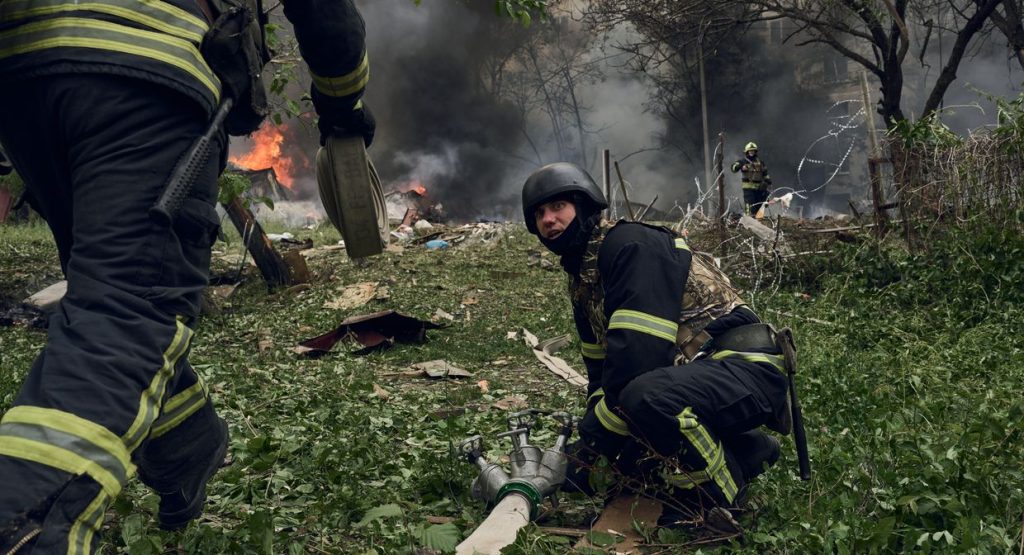The recent battlefield successes of Russia in Ukraine have been attributed to the extensive use of glide bombs, which rain down on the country, creating massive craters and causing significant damage. These bombs have been a key weapon for Russia in its offensive in Kharkiv Oblast, enabling ground troops to advance. Despite their simplicity and low cost compared to other missiles, glide bombs have proven to be highly effective in warfare, contributing to Russia’s gains in strategic locations such as Avdiivka. Experts warn that Ukraine, lacking adequate defense against these bombs, is likely to face greater threats as Russia continues to deploy them in offensive operations.
Glide bombs are air-dropped bombs modified to be launched from a distance rather than directly over the target. Russia mainly uses Soviet-era FAB-family bombs upgraded with a gliding and correction module, which includes wings that flip out upon release and a satellite navigation system. Converting unguided bombs into smart ones costs around $20,000, making them a cost-effective alternative to expensive missiles. With a range of up to 50-60 kilometers, Russian glide bombs can strike targets while keeping aircraft out of reach of Ukrainian air defense systems. Russia has also introduced newer, heavier glide bombs, posing a significant threat to Ukraine.
Russian forces have significantly increased their use of glide bombs in recent months, firing over 100 bombs daily across the front lines. These bombs are particularly effective against static targets like bridges, command posts, and bunkers, destroying fortifications and infrastructure to support ground forces’ advancement. The lack of proper fortifications in Kharkiv Oblast has been cited as a reason for Russia’s rapid advances, as Ukrainian defenses are vulnerable to glide bomb attacks. While Ukraine possesses glide bombs supplied by Western allies, their arsenal is limited compared to Russia’s capabilities.
Defense against Russian glide bombs poses a challenge for Ukraine, as shooting them down is difficult due to their heavy iron structures and high-speed, high-altitude approach. Electronic warfare to degrade GPS signals or intercept launching aircraft is one method, but Ukraine’s limited electronic warfare capabilities hinder this defense. Destroying launching aircraft before releasing glide bombs is another effective strategy, which Ukraine aims to achieve with longer-range air defense systems like Patriot and SAMP-T. The presence of modern aircraft like F-16 fighter jets, pledged by Western allies to Ukraine, could also help counter glide bomb attacks.
To support independent journalism and continue reporting on important developments in the Ukrainian war, individuals are encouraged to become members of the Kyiv Independent community. The recent use of glide bombs by Russia in Ukraine has intensified the conflict, highlighting the need for stronger defense mechanisms and international support for Ukraine’s efforts to defend against such attacks. As Ukraine faces ongoing challenges in countering glide bomb threats, the deployment of modern aircraft and improved defensive strategies are essential for the country’s defense against Russian aggression in the region.


